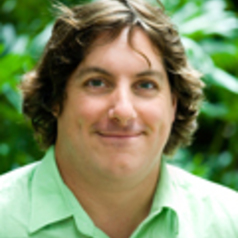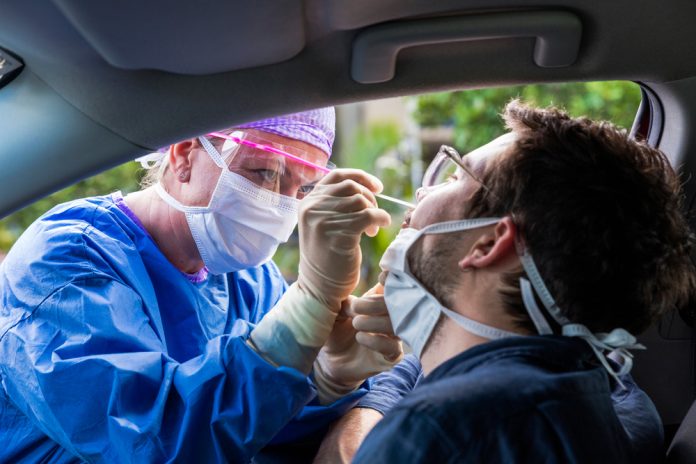An urgent hunt to unearth the so-called ‘missing link’ on the Sunshine Coast that may have led to Queensland’s worst outbreak since the early pandemic will rely on high levels of local testing, says a USC expert.
University of the Sunshine Coast (USC) nursing lecturer and outbreak advisor Matt Mason said daily testing rates needed to be high enough to flush out any hidden virus lurking in the community.
Mr Mason said case numbers on Wednesday and Thursday, from higher testing on Tuesday and Wednesday, would reveal whether the Coast was harbouring the Delta virus and “tell us what’s been going on”.
Queensland announced 16 new cases on Wednesday on the back of the highest-ever daily testing rates since the start of the pandemic, and all were linked to the Indooroopilly cluster in Brisbane.
The Sunshine Coast’s lucky streak continued with zero locally acquired cases.
“We should find out over the next couple of days if there is something we need to be worried about or whether we’ve just been very fortunate here on the Sunshine Coast,” said Mr Mason, also a technical advisor to the Global Outbreak Alert and Response Network which is part of the World Health Organisation (WHO).
The Sunshine Coast has not reported a locally acquired case in this outbreak and Sunshine Coast News understands that a Sippy Downs unit block where residents have been asked to self-isolate is considered “low risk” because of fleeting contact in one family with a Brisbane visitor who later tested positive.
No exposure sites have been listed on the Sunshine Coast because the person in question did not stop at any locations on the drive from Brisbane to the Coast and only stopped briefly at the complex.
A Queensland Health spokesperson said all residents had been contacted.
There have been long testing queues at local clinics and it’s estimated thousands have been tested daily at the two public clinics at Sunshine Coast University Hospital (SCUH) and Nambour General Hospital as well as the numerous private pathology sites.
However the only local figures available so far are 900 tests on Monday, 850 on Tuesday and 400 at pop-up testing sites at schools through Queensland Health.
Statewide there were nearly nearly 51,500 tests on Tuesday, breaking the previous record of just over 35,000.

Dr Jeannette Young has repeatedly singled out the Coast as the potential ‘missing link’ after genomic testing revealed the outbreak had the same sequencing as a patient who had quarantined at Sunshine Coast University Hospital (SCUH) in early to mid-July.
However Dr Young conceded on Wednesday that the mystery person may never be found.
Mr Mason said the only way to test Dr Young’s theory and to find any connection between the SCUH patient and patient zero in Brisbane (a 17-year-old student from Indooroopilly State High School) was to ensure more people got tested which he said was a “reasonable plan”.
“With epidemiological tracing you’re trying to join all the dots and we know where that person was at SCUH and we know where the disease ended up in Indooroopilly,” said Mr Mason.
“So we know it’s got there (Indooroopilly) and the task now is to try and work out how.
“And clearly if the person was here on the Sunshine Coast, then there is a risk that there is disease here on the Sunshine Coast that we haven’t picked up.
“So now what we need to do is see if we can find that missing link.
“Clearly there’s something there (the chief health officer) thinks is worth investigating otherwise she wouldn’t be doing it.”
Get the day’s top Sunshine Coast stories direct to your inbox by subscribing to our FREE daily news bulletin: Go to SUBSCRIBE at top of this article to register
Mr Mason said it could transpire that there was no Delta to be found on the Coast in which case he said it made sense to consider lifting the lockdown restrictions for this region.
“I think if the testing numbers are high and there are clearly no cases outside of that central Brisbane area I think there’s a reasonable argument to lift some of the restrictions in other areas.
“However, you do have to be really careful because we’re talking about the centre of Brisbane where a lot of people travel to and from.
“There just needs to be some thought around how it’s relaxed.”
Before the lockdown, which started Saturday 4pm, Mr Mason said testing rates on the Sunshine Coast and in Queensland had been low “because there wasn’t much going on”.
“It’s that time of year where people say ‘It’s a cold’ or ‘I’m a bit run down it won’t be COVID’ and they haven’t been getting tested, but what we want to make sure is they do get tested,” he said.
“So the process they’ve got now, especially around the schools, is to just try and identify if we’ve actually missed something or whether there is actually no COVID on the Coast.”
- Related story: Coast students and staff swept up in urgent testing blitz
Mr Mason said numbers on the weekend would not have been enough to flush out Delta if it was lurking in the community.
“Lockdown started Saturday evening so unless people were particularly unwell I think Saturday and Sunday they would have been less likely to have gotten tested because the testing sites aren’t open on the weekend and we know there’s a drop off,” he said.
“What we needed was good numbers and we got some good numbers on Monday — it wasn’t where we wanted it to be, but it has improved.
“I think (Tuesday) is the big push day to really ramp up the numbers and make sure people are getting tested.”
Mr Mason urged Sunshine Coast residents to continue practising good hand hygiene, to follow the public health advice and to get tested.
Find a testing clinic close by here. GP referrals are not required on the Sunshine Coast during this lockdown.





